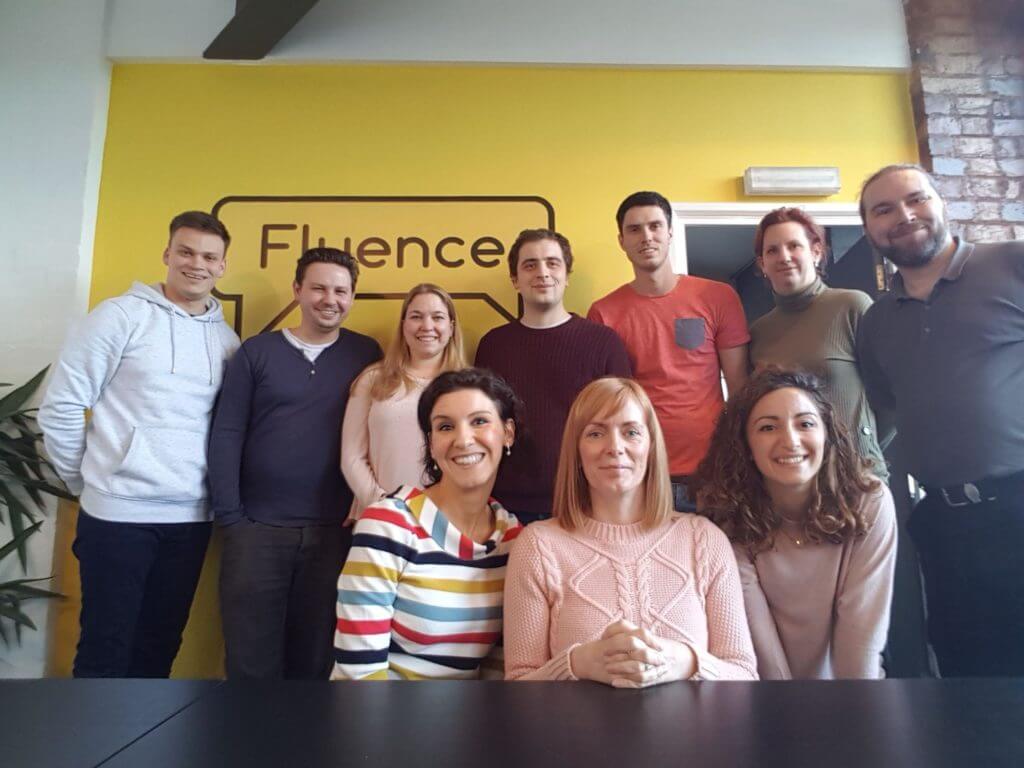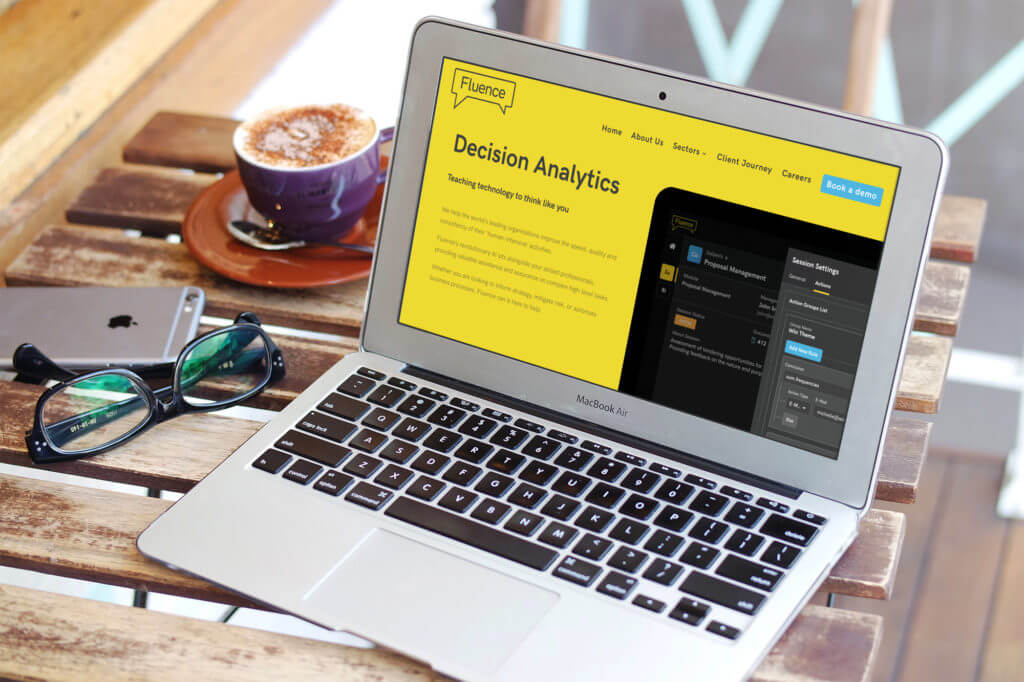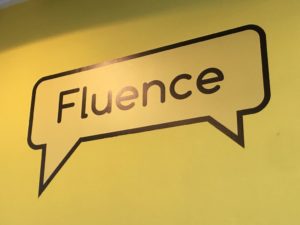This is the first in a series showcasing up-and-coming startups, their struggles and successes. Here’s how SETsquared alumnus Fluence found the right product to invest in – and the investment to fund it.
One of the best ways to avoid startup pitfalls and get workable advice is to speak to those who have gone before. So we spoke to a new company who seem to be getting things right.
Fluence was founded in 2016 by husband and wife team, David and Jennifer Hore. As founders of education management company Rapid English before it, they were no strangers to building a business – but hadn’t delved quite so deeply into the world of tech before.
Here’s what they’ve learned on their journey so far.
Could you tell me a bit about your product?
David: Our powerful software analyses the mass of written content that passes through an organisation to reveal how important decisions are made.
We use a combination of natural language processing, machine learning and AI to infer the level of knowledge the person had on the subject, their confidence, their age range, gender – all sorts of things.
Our prediction algorithms allow our clients to automatically assess the quality of future decisions based on the collective expertise of their workforce. We call this ‘hybrid decision-making’ – where the best parts of human intuition are combined with the speed and reliability of software.

So you’re just starting to understand that there are lots of applications for this, right?
David: Yes, the first application was very focused on education, then we realised it could be employed in any situation where you have content and humans making decisions about that content.
A person is very good at looking at one essay in incredible detail, but asking them to mark 1,000 essays the exact same way so the grading is consistent? These are the kinds of things computers are better at so we’re trying to marry the two and get the best out of both the human and the technology.
But how did you know this idea was ‘the right one’?
David: Our literacy angle got incredible results, but the consultancy model could only reach as many people as we had staff. We took some time away and realised that what we’re really good at is understanding language and making that useful. This allowed us to completely pivot while still maintaining the integrity of the original concept we’d developed.
Now we can build a thousand products in no time. We can pin an app to the core ‘brain’ of our product in a couple of weeks – rather than having to redesign the whole brain for each new client.
There is a conflict between what investors want to see in the short-term, and what it takes to build something that can scale.
It was only after we’d raised quite a lot of funding that the full potential of the what we were doing started to emerge.
– David Hore
So did you build a prototype first or did you get straight into doing it?
David: We actually did prototype – but we prototyped the technology, not the project.
Initially, there was definitely a conflict between our own investors and what we were doing. It was only after we’d done a lot of work on the technology that people started to realise the scale of the solution. They’re more patient with us now. They’ve started seeing that this is really big.
There’s this terrible conflict with startups where you’re forced to build something with nothing, and it’s only once you have that little something that you’re given the flexibility to do it properly.
Did you approach a digital agency or build a team in-house?
Jennifer: We used an agency to develop the prototype and prove the idea – but it wasn’t enough for us to say we’re going to spend a lot of money to build the actual product. Then we built our own team.
David: I don’t think an agency can ever do as much for the hourly rate as a dedicated internal team – there’s too much to do in a startup for it to be done completely externally.
Jennifer: It’s a bit catch-22 though, because we were able to attract money from having a proof of concept and it proved that the manual research was convertible into a technology. So you can’t replace that early agency help.
‘What SETSquared do really well is linking you to people who’ve done it before.
Their Entrepreneurs in Residence could tell us what investors needed to see and show us what was missing […].
– Jennifer Hore
Did you set out to join an incubator?
Jennifer: I’d done schemes with accelerators or incubators or business start-up support but I’d never done one like SETsquared before.
It’s actually very competitive to get in – you have to go through an interview process and it’s probably the hardest thing we’ve had to get into. I don’t know if they were that convinced at the beginning!
David: There’s a great line I hear a lot which is that ‘if it was easier to explain it would have been done already’.
We probably seem very academic and research-heavy rather than commercial, so we always needed help with that aspect. Their support was integral to our journey.
Jennifer: What SETSquared do really well is linking you to people who’ve done it before. Their entrepreneurs and residents are upfront with you – they could tell us what investors needed to see and show us what was missing without the pressure of them wanting to invest in us.

And how did you approach financing the app?
Jennifer: We wanted to really go for it! We didn’t want to do things on a shoestring anymore. So the decision to pursue external investment was actually kind of easy – we did a lot of research and looked at the whole VC option and we have landed with supportive investors who have a huge remit for promoting education.
We knew we wanted to keep our technology in line with that market because we’re very passionate about being able to level the playing field a bit, so they were a very good early investor. They did a lot of convertible equity grants, so if we raised over a certain amount it would convert as a really favourable rate. That was a no-brainer because, if nothing ever came of it, there was very little risk for us.
Through SETsquared we started working with the Bristol Private Equity Club, a group of individuals who are wealthy through having their own businesses. They’re just really good investors. They put you through the wringer in terms of having to show all your validation and you still have to do the pitching and processes, but you’re speaking to individuals rather than a huge group.
‘We were being pushed a lot to get a pure SaaS product into people’s hands.
And instead we started pushing back and insisting on doing the feasibility projects as a way of getting market research and validation.’
– Jennifer Hore
How do you work out what to charge your clients?
Jennifer: We’re trying to go into as many different sectors and situations as we can (we’re already helping an awarding body, some universities and audit offices). We’re going in and doing a load of research and seeing if we can leave an organisation with a SAAS platform that solves their business critical challenges.
One of the nice things about these studies is that there’s already an organisation putting a problem out into the universe with a price tag attached of what they’re willing to spend.
We were being pushed to get a pure SaaS product into people’s hands. And instead we started pushing back and insisting on doing the feasibility projects as a way of getting market research and validation. It would actually be very difficult for us to establish a price without going through this phase – we’re getting a lot of market insight and that will really help us then identify what we should charge for a SAAS platform.
Do you have any mentors at this stage?
Jennifer: We have some really good mentors. We were really lucky in that we found most of them through SETsquared – our chairman was our mentor before he became a chairman, and then he became an investor as well. We didn’t know he was interested in investment until quite late in the game – I’m glad we didn’t know, because he was very honest and we were very honest with him, which is what we needed.

A big thanks to David and Jennifer for their time. And best of luck Fluence!
Feeling inspired?
To learn more about growing a startup, join us at our quarterly Design/Build/Market event on the 18th July at Engine Shed.
We’ll be exploring how to future-proof your product, secure funding to take you to the next level, and build a team that smashes goals.